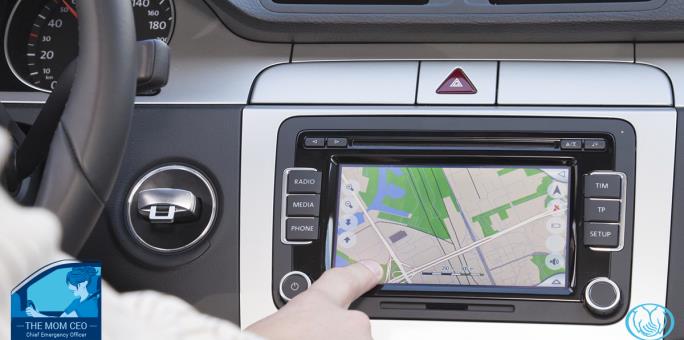The latest technology might be an annoyance when you’re trying to get in that 15-minute nap and your kids are playing on the tablet at full volume, but when a Mom CEO (Chief Emergency Officer) is dealing with a weather emergency in the car, the latest innovations can help get you and your family home safely. Today’s vehicles seem to pack in helpful technology from roof to tires and from bumper to bumper.
Check out where some of these useful advances might be in your vehicle and how they can help any Mom CEO stay safe on the road despite extreme weather.
Dashboard
Many vehicles today provide the option of an in-dash navigation system, providing drivers with easy access to GPS-powered maps and applications. But even if your vehicle doesn’t have a large GPS display built into the dashboard, it doesn’t mean you can’t utilize GPS technology. You could purchase an aftermarket, portable navigation system for your car, but today’s smartphones can utilize a variety of smartphone apps using GPS for navigation or sever weather alerts. Also, most people have access: More than 61 percent of American adults own smartphones.
Steering Wheel
Making certain turns to avoid debris, snow drifts or icy patches can be difficult in a given situation, particularly if you have to turn the steering wheel drastically. How much you have to turn the steering wheel to make a maneuver has to do with your vehicle’s steering ratio — the ratio of how far you turn the steering wheel to how far the wheels turn, says gizmag.com.
To improve the steering ratio, Ford is making its new Adaptive Steering system available on select models in 2015. The Adaptive Steering system allows better handling at different speeds, giving the driver more control by adapting the steering ratio as conditions change. Other car manufacturers (including BMW and Nissan) are working on their own version of this technology, as well.
Back Bumper
The U.S. government is mandating that by May 1, 2016, 10 percent of automakers’ vehicles must be equipped with backup cameras. That number becomes 40 percent by May 1, 2017, and all models by May 1, 2018.
Backup cameras can help avoid weather-related accidents: According to a March 2014 study by the Insurance Institute of Highway Safety, nearly 44 percent more drivers in vehicles equipped with backup cameras avoided backing over stationary objects like snow banks than those who had neither backup cameras nor backup sensors.
Headlights
Headlights have been on cars since the late 1800s, according to autoevolution.com, and have been helping drivers navigate the night ever since. But a new type of headlight technology, called adaptive headlights, is being developed to allow the headlight to turn with your car, increasing your field of view when it counts.
In an experimental study in October, 2014, the IIHS found that drivers with adaptive headlights spotted low-reflectance targets located on the inside of curves in the road as much as one-third of a second earlier, or about 15 feet sooner, at 30 mph, compared to drivers with regular headlights.
Tires
If you have a newer vehicle, chances are your car sports a tire pressure monitoring system, which will alert you when tire pressure changes. According to tpmsmadesimple.com, cars sold since 2007 are required to have tire pressure monitoring systems, thanks to the TREAD Act.
A tire that is underinflated by just 5 pounds per square inch can potentially fail, according to Edmunds.com. Significant temperature changes, often associated with severe weather, can change tire pressure and affect performance. According to Goodyear, air pressure in a tire typically goes down 1-2 pounds for every 10-degree reduction in temperature.

The Influence of Technology on Bad Weather Driving
by
Tags:

Leave a Reply